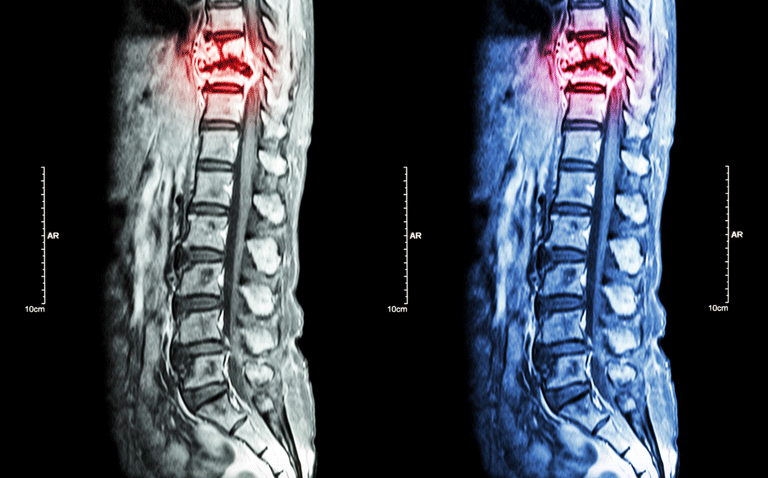Prophylactic irradiation of patients with asymptomatic bone metastases reduces skeletal-related events, hospitalisation and improves survival
The prophylactic irradiation of patients with asymptomatic bone metastases could represent a useful strategy for reducing skeletal-related events, hospitalisations and potentially improving overall survival according to the findings of a randomised trial presented by US researchers at the American Society for Radiation Oncology (ASTRO) conference, 2022.
Solid tumours frequently metastasise to bone and while this may occur in any part of the skeleton, the most common areas include the bones of the pelvis, spine, ribs, and long bones of the upper and lower extremity. Metastasis to bone disrupts skeletal homeostasis by disturbing the balance between osteoblastic bone formation and osteoclast-mediated bone destruction. Moreover, such metastases are a leading cause of pain in cancer patients. A further problem with bone metastases is the development of skeletal-related events (SREs), which represent a common complication of bone metastases with serious negative consequences for patients, examples of which include pathologic fracture, spinal cord compression, radiation therapy, and palliative bone surgery.
The role of external beam radiotherapy has become well recognised in the management of bone metastases. In a 2007 systematic review, it was found that the overall response rate to pain relief was 58% and that the complete response rates for pain was 23%. For the present study, Dr Erin Gillespie, the lead author indicated in a press release from the conference, that the study arose from the observation of how many patients hospitalised for painful bone metastases, actually had evidence of these lesions on imaging scans several months earlier. The team therefore wondered if prophylactic irradiation of asymptomatic bone metastases might prevent future skeletal-related events. For the study, they randomised high-risk, but asymptomatic bone metastases patients to either prophylactic irradiation or standard care which included chemotherapeutics, targeted therapies etc and delivered at the discretion of the treating medical oncologist. Enrolled participants were at least 18 years of age with a metastatic solid tumour malignancy and more than 5 metastatic lesions, including at least one asymptomatic high-risk bone lesion, defined as: bulky disease (≥2cm in longest diameter), junctional spine or posterior spinal element disease, disease involving hip or sacroiliac joint, or disease in long bone involving 1/3-2/3 cortical thickness. The primary outcome was SRE and defined as fracture, cord compression, or intervention with surgery or radiation and these assessed from randomisation to death or 12 months.
Prophylactic irradiation and skeletal-related events
A total of 78 patients with 122 bone metastases were enrolled and randomised to prophylactic radiotherapy (39) or standard care. The most common primary cancer types were lung (27%), breast (24%), and prostate (22%) and 71 patients provided evaluable data for the primary endpoint.
After 12 months, SRE occurred in 1.6% of patients in the prophylactic arm but 29% in the standard care arm (p <0.001). Interestingly, there were significantly fewer patients hospitalised for SRE in the prophylactic arm (p = 0.045). Moreover, after a median follow-up of 2.4 years, overall survival was significantly longer in the prophylactic arm (Hazard ratio, HR 0.50, 95% CI 0.28 – 0.91, p = 0.02). Pain was also significantly reduced at 3 months in the prophylactic arm (p < 0.05) compared to the standard arm.
Although this was the first trial of its kind, Dr Gillespie added that future research should seek to answer questions such as ‘does this apply to someone early in the course of their metastatic disease who may not have any symptomatic lesions? and ‘at what point would they benefit from intervention with radiation?’ and finally, given that there are many patients with multiple sites of metastases, ‘how do we identify those lesions that are most likely to become problematic?‘
Citation
Gillespie EF et al. Prophylactic Radiation Therapy vs. Standard-of-Care for Patients with High-Risk, Asymptomatic Bone Metastases: A Multicenter, Randomized Phase II Trial. LAB04. ASTRO 2022.










